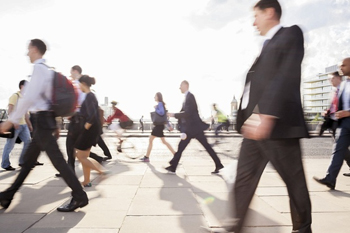New York, Oct 24: Wealthy people pay less attention to those around them as compared to people of lower social status, according to a new study that used Google Glass headsets to track gazes.
 The research shows that people who categorise themselves as being in a relatively high social class spend less time looking at passersby compared with those who are not as well off, a difference that seems to stem from spontaneous processes related to perception and attention.
The research shows that people who categorise themselves as being in a relatively high social class spend less time looking at passersby compared with those who are not as well off, a difference that seems to stem from spontaneous processes related to perception and attention.
"Our research documents that other humans are more likely to capture the attention of lower-class individuals than the attention of higher-class individuals," said psychological scientist Pia Dietze of New York University.
"Like other cultural groups, social class affects information processing in a pervasive and spontaneous manner," said Dietze.
Dietze and co-author Eric Knowles hypothesised that our social class affects how relevant others are to us in terms of our own goals and motivations.
Compared with people who come from less-advantaged circumstances, people from relatively privileged backgrounds are likely to be less dependent on others socially; as such, they are less likely to view other people as potentially rewarding, threatening or otherwise worth paying attention.
Dietze and Knowles said this difference in what they call "motivational relevance" is so fundamental that it manifests in basic cognitive processes - like visual attention - that operate quickly and involuntarily.
In one study, the researchers had 61 pedestrians in New York City wear Google Glass, presumably as a test of the electronic eyewear.
The participants walked roughly one block while Google Glass recorded whatever they were looking at, and they also completed several survey measures that gauged social class.
In one measure, for example, participants categorised themselves as belonging to either the poor, the working class, the middle class, the upper-middle class, or the upper class.
Later, an independent group of raters watched the recordings and noted the various people and things each Glass wearer looked at and for how long.
Researchers then examined whether there were any links between what the participants paid attention to and their social class, taking participants' ethnicity into account.
The results indicate that social class did not seem to play a role in how many times Glass wearers looked at other people.
However, social class was associated with how much time they spent looking at passersby: Participants who categorised themselves as being in a higher social class spent less time looking at other people than those who placed themselves in a lower social class.
Two follow-up studies using more precise eye tracking technology showed similar results: Higher-class participants spent less time looking at people in a street scene than did their lower-class peers.





Comments
Add new comment